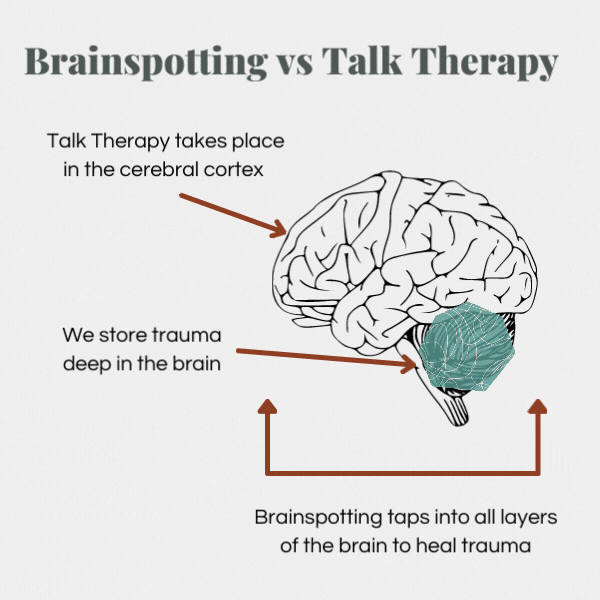EMDR Trauma Therapy
Serving clients in California, Washington, and locally in San Rafael & Oakland
Relief from Trauma
If you’re struggling with trauma, you may feel stuck in cycles of anxiety, numbness, or emotional overwhelm. You might experience flashbacks, nightmares, or a constant sense of danger, even when you’re safe. Your body could hold onto trauma through chronic tension, difficulty relaxing, or feeling disconnected from yourself and others. Relationships may feel difficult, and you might find yourself avoiding certain places, people, or emotions to protect yourself from pain.
Trauma Therapy can help by providing a safe space to gently explore and process your experiences at a pace that feels right for you. Through somatic and mindfulness-based approaches paired with evidenced-based modalities such as EMDR, Brainspotting, Somatic Experiencing, and Sensorimotor Psychotherapy, we can work together to help your nervous system regain a sense of balance, so you can feel more present, grounded, and in control of your life again.
EMDR Trauma Therapy
EMDR is considered the gold standard when it comes to trauma therapy. The approach is evidence based and used to work with recent or past “event trauma,” developmental trauma, relational trauma, and childhood trauma. It is a body-based approach that uses “bi-lateral” stimulation to “re-process” memories, thoughts, and feelings associated with traumatic events or relationships in a person’s life.
When a person goes through a traumatic event, there are often images and stories that become locked into their “neural-network.” These can often be stories with themes of self-blame, feelings of guilt, or disturbing images that all cause distress.
Using the EMDR approach we “open” the neural network and “re-process” the trauma so that a person can have more neutral, adaptive, or positive thoughts, feelings, and stories that are associated with the experience.
I use trauma-informed care which means that before we do any reprocessing, a client is given tools and resources on how to manage, cope, and tolerate intense or difficult emotions, thoughts, and memories.
Brainspotting Trauma Therapy
Brainspotting was developed by Dr. David Grand in 2003 as a variation of Eye Movement Desensitization and Reprocessing (EMDR) therapy. Dr. Grand was inspired by his observation that clients would naturally fixate on a particular spot while processing traumatic memories, leading to the development of Brainspotting as a focused and targeted approach to trauma therapy. While EMDR also involves eye movements to process traumatic memories, Brainspotting focuses on identifying and staying in specific eye positions that are directly linked to the neural pathways associated with the trauma, allowing for deeper processing and release of emotional distress. Both therapies aim to facilitate the reprocessing of traumatic experiences and promote healing, but Brainspotting offers a more focused and flexible approach to targeting the brain's neural connections related to the trauma.
Brainspotting helps access and release stored emotional trauma, allowing for deep healing and resolution of unresolved issues. Brainspotting has been found to be effective in treating trauma-related symptoms, such as PTSD, as well as other mental health disorders like anxiety, depression, and phobias, by targeting the root cause of the emotional distress and promoting processing and integration of the traumatic experiences.
Somatic Trauma Therapy
Somatic Experiencing (SE) and Sensorimotor Psychotherapy (SP) are profound somatic modalities that help clients heal trauma by addressing how it is stored in the nervous system and body. Unlike traditional talk therapy, which primarily focuses on thoughts and emotions, these modalities work directly with physical sensations, movement, and the body’s innate ability to regulate stress. SE helps clients gradually release stored survival energy—such as fight, flight, or freeze responses—by guiding them to notice and gently process bodily sensations linked to past trauma.
Sensorimotor Psychotherapy integrates mindfulness and movement to help clients become aware of how trauma has shaped their posture, physical reactions, and nervous system patterns. Rather than just talking about trauma, I help clients notice how their bodies react when discussing a past traumatic or challenging experience. Clients are invited to experiment with different movements to create a new, embodied sense of safety and control. Both body-based approach allows clients to process trauma in a way that words alone often cannot, promoting deep healing and resilience.

I offer a free 20-minute consultation to all clients so you can ask questions, learn more about my approach, and feel out whether we are a good fit.





